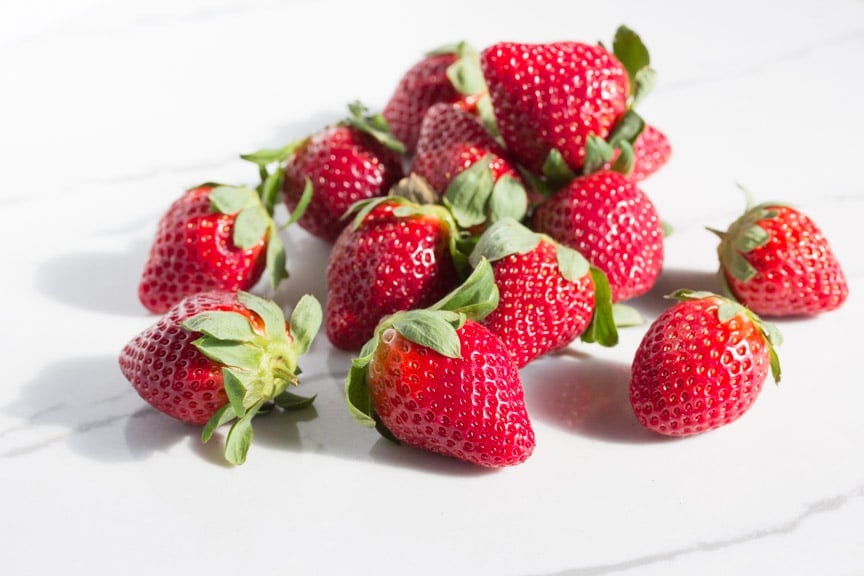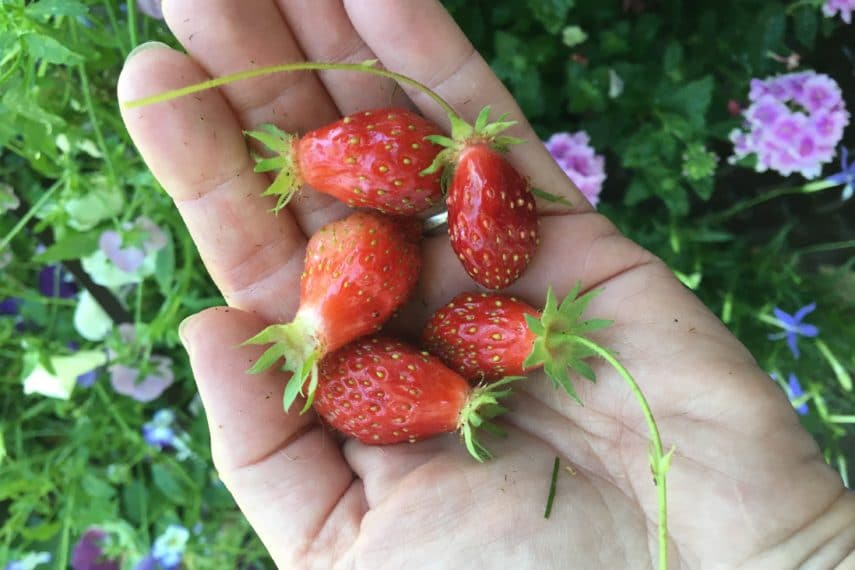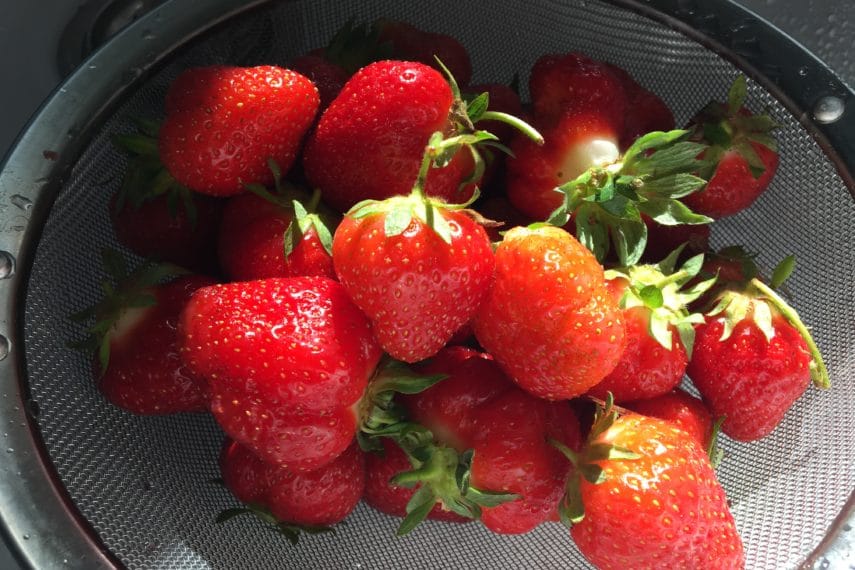About Strawberries
Fragaria × ananassa is the common strawberry and they have been lab tested by both Monash University and FODMAP Friendly.
Initially, both Monash University and FODMAP Friendly recommended 10 medium (140 g) strawberries as a low FODMAP serving size. The serving sizes are set by governmental healthy eating guidelines. Monash reported no FODMAPs present in this fruit and FODMAP Friendly did not specify.
As of Spring 2021 FODMAP Friendly re-tested strawberries and now recommend a serving size of 50 g, or about 5 berries, stating that larger portions contain fructose.
As of early 2022 Monash University retested strawberries and these tests showed a low FODMAP serving size of 65 g or about 5 medium strawberries.
Neither lab test is more right or wrong. Our article on What Is A Low FODMAP Serving Size? might be of interest.
Read about more FODMAP free foods in our articles, Monash University Lab Testing Explained and also No FODMAP Foods.
Always eat to your own personal tolerances.

How to Buy
Color is actually not automatically an indication of sweetness. You might be drawn to a deep rich red all-over color, but many berries have been bred and hybridized for color and not necessarily taste – and taste is paramount! Ask to sample a berry before buying. Believe it or not many markets will let you do this, even if they do not advertise that they do. In general, however, do steer clear of berries that have white or green tops or shoulders. Strawberries also vary hugely is size from thimble size to golf balls size, so before you buy check your recipe to see if a size is recommended such as “medium”.
Look for firm, plump, slight dry berries. Sometimes they sport a slight sheen when very fresh. They should have their green tops intact, which should also look perky and not withered. If the berries are packed in a sealed clamshell type container, turn it over to view the berries on the bottom and make sure none are squished or moldy.
How they are sold can also vary. You might find pints and/or quarts, especially at farmer’s markets. The grower fills the pint and quart containers by eye until they are full, but the weight can fluctuate, typically anywhere between 1 ½ pounds (680 g) to a little over 2 pounds (910 g) for a quart. You will find a variety of weights because a quart is a volume measurement.
You also might find strawberries packaged by weight, such as 16-ounce (454 g) packages. (I was once hired by Driscoll’s to figure out the weight vs. volume of all of their berries – strawberries, blueberries, raspberries and blackberries – and the strawberries were definitely the most problematic because they can vary so much in size).
Here is some frequently needed information, representing averages:
1 pint of medium sized strawberries = ¾ pound (340 g) = 2 cup (480 ml)s quartered or sliced
1 quart of medium sized strawberries = 1 ½ pounds (680 g) = 4 cups (960 ml) quartered or sliced
16-ounce (454 g) clamshell container = 3 cups (720 ml) quartered or sliced
How to Prep & Use
Wash strawberries right before using and gently pat dry with clean paper towels. They are a great raw fruit as is, on top of cereal, sliced into yogurt, frozen for smoothies or featured in recipes such as our Fresh Strawberry Tart or Roasted Strawberries. If eating berries on their own, bring to room temperature before serving for optimal flavor and juiciness.
How to Store
All berries are very perishable and it is best to use them soon after purchase. Keep them refrigerated, unwashed until serving. I turn to my Mom’s storage technique as tried and true.
- Remove any moldy berries from the bunch as they can spread the rot.
- Place in a single layer in a paper towel lined container.
- Seal, but not airtight.
- Refrigerate in crisper drawer.
- Bring to room temperature before serving for best flavor if eating as is.
Follow these directions and you will get maximum longevity and maximize flavor and texture.
Varieties
Most of the berries we cook with and eat for snacks will be a hybrid of Fragaria × ananassa. Occasionally you might come across the woodland strawberry, seen above, which is Fragaria vesca. These tiny berries are also called fraises des bois, alpine and sometimes just referred to as “wild”.
Many strawberries are at their peak in June but there are varieties that are early, mid or late season as well.

Strawberry Recipes
We’ve got plenty for you!
- Glazed Strawberry Cheesecake
- Strawberry Coconut Meringue Cake
- Strawberry Salsa
- Strawberry Bread (a community FAVE!)
- Spinach Salad with Hot Bacon Dressing, Chicken, Blue Cheese & Strawberries
- Strawberry Shortcake
- The Berries Pie
- Towering Fruit Pavlova
- Fourth of July Slab Pie
- Strawberry Rose Tart
- Pineapple Strawberry Prosecco
- Strawberry Cornmeal Skillet Cake
- Strawberry Rhubarb Crisp
- Strawberry Lemonade
- Strawberry Rhubarb Cobbler
- Crumb Topped Berry Slab Pie
- Strawberry Yogurt Granola Pops
- Strawberry Salsa
- AND MORE!


